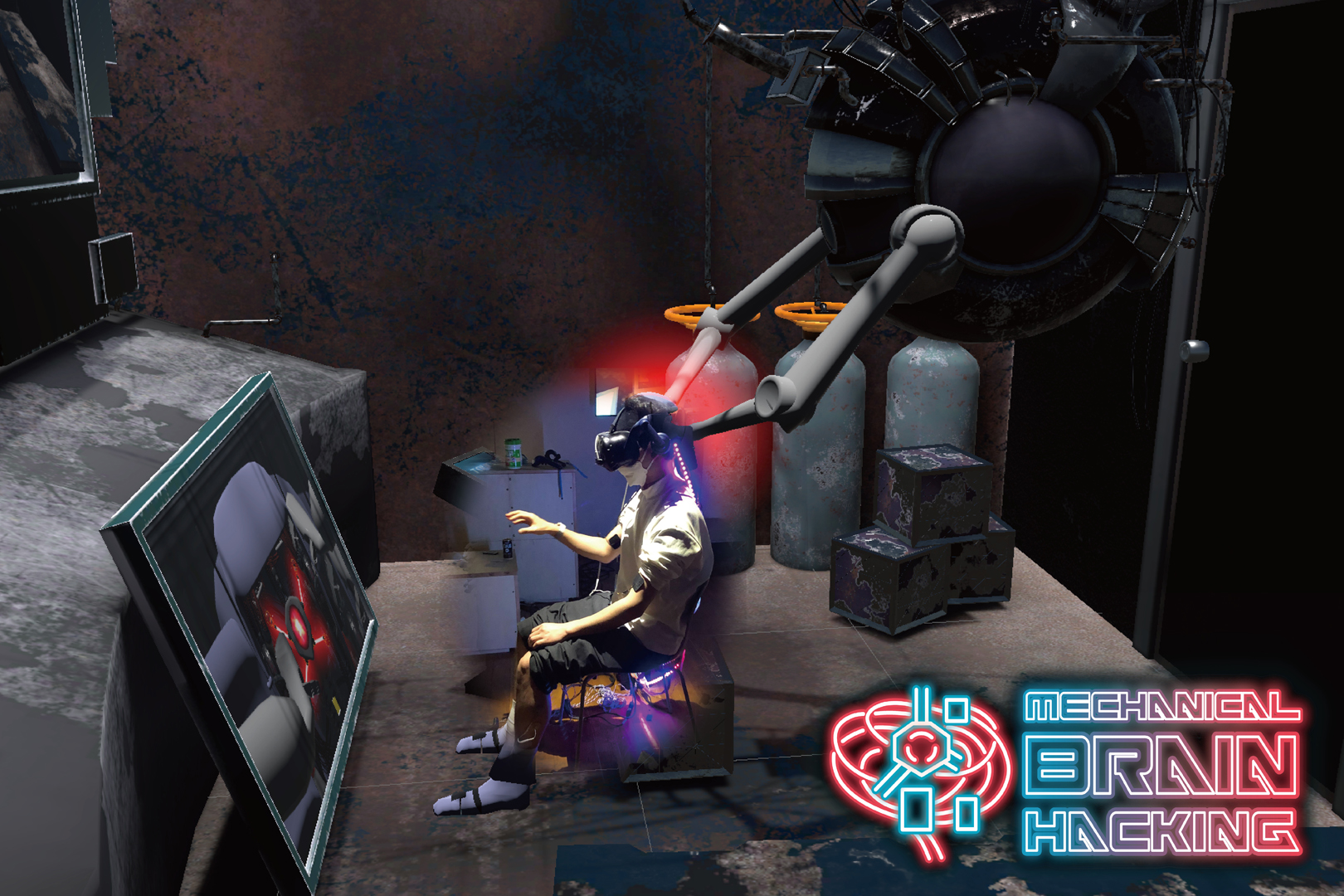“Mechanical Brain Hacking : A VR Cybernetics Simulator for Body Editing” by Takashita, Tanaka and Suzuki
Conference:
- SIGGRAPH 2023
-
More from SIGGRAPH 2023:


Type(s):
Entry Number: 10
Title:
- Mechanical Brain Hacking : A VR Cybernetics Simulator for Body Editing
Presenter(s):
Description:
Avatar technology has attracted attention, but research in the field of non-humanoid avatars has mainly focused on evaluating the operability and embodiment of new body systems. In addition to these points, we believe that users’ design of their own avatar structure and body motion mapping is also important to improve the user experience. We present Mechanical Brain Hacking, a VR cybernetics simulator that allows for easy modification of both the mapping and the structure of the avatar. Participants take on the role of a damaged robot with limited mobility except for the right hand. They use a surgical machine linked to their avatar’s hand movements to access their own brain and repair its circuits to regain control of their limbs. Haptic and electrical stimulation feedback, along with visual and auditory feedback through a VR headset, provide a fully immersive experience. Participants can even gain an extra limb by attaching additional limb parts. Through the experience of changing motion mapping and body structure in real time, this project offers a unique perspective on the concept of an “editable body”, a body that is edited by oneself and in real time.
References:
- Tomoya Sasaki, MHD Yamen Saraiji, Charith Lasantha Fernando, Kouta Minamizawa, and Masahiko Inami. 2017. MetaLimbs: Multiple Arms Interaction Metamorphism. In ACM SIGGRAPH 2017 Emerging Technologies (Los Angeles, California) (SIGGRAPH ’17). Association for Computing Machinery, New York, NY, USA, Article 16, 2 pages. https://doi.org/10.1145/3084822.3084837
- Yeongho Seol, Carol O’Sullivan, and Jehee Lee. 2013. Creature Features: Online Motion Puppetry for Non-Human Characters. In Proceedings of the 12th ACM SIGGRAPH/Eurographics Symposium on Computer Animation (Anaheim, California) (SCA ’13). Association for Computing Machinery, New York, NY, USA, 213–221. https://doi.org/10.1145/2485895.2485903
- Andrea Stevenson Won, Jeremy Bailenson, Jimmy Lee, and Jaron Lanier. 2015. Homuncular Flexibility in Virtual Reality. Journal of Computer-Mediated Communication 20, 3 (01 2015), 241–259. https://doi.org/10.1111/jcc4.12107 arXiv:https://academic.oup.com/jcmc/article-pdf/20/3/241/19492300/jjcmcom0241.pdf




